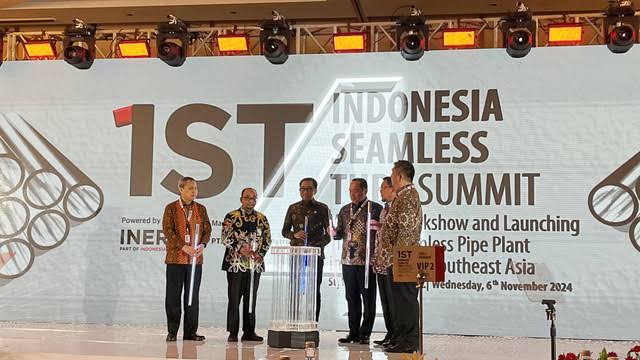Southeast Asia’s Biggest Seamless Pipe Factory Opens in Indonesia, Supporting Oil and Gas Industry
The factory’s primary market is the oil and gas industry, which is projected to absorb 80-90% of the plant’s output. Additionally, the seamless pipes produced will also serve sectors such as industry and defense.
The factory features two distinct production lines. The first line is dedicated to hard rolling mills, with a production capacity of 200,000 tons per year.
The second line is focused on metal heating processes, capable of producing 100,000 tons annually. These lines allow the factory to meet the varied demands of different industries, while also ensuring high-quality output for critical sectors like oil and gas.
The seamless pipe factory aligns with Indonesia’s broader energy strategy, especially its ambitious targets for the oil and gas sector. By 2030, the government aims to produce one million barrels of oil per day and reach a natural gas output of 12 billion standard cubic feet per day. The new plant will play a key role in helping the country achieve these goals by providing reliable and domestically-produced piping for the sector.
With a focus on domestic production and technological advancements, the plant also supports the government’s goal of reducing dependency on imports. This move is seen as a step towards improving Indonesia’s industrial resilience and ensuring a stable supply of essential materials for key sectors. As part of its commitment to sustainable growth, the factory will also invest in green technologies to minimize environmental impact.
This initiative is expected to create thousands of jobs, both directly and indirectly, through its supply chain. The factory will require skilled workers in various fields, from manufacturing to technical support, contributing to the local economy. In addition, the presence of such a large-scale production facility could stimulate further investment in related industries.



























Tinggalkan Balasan